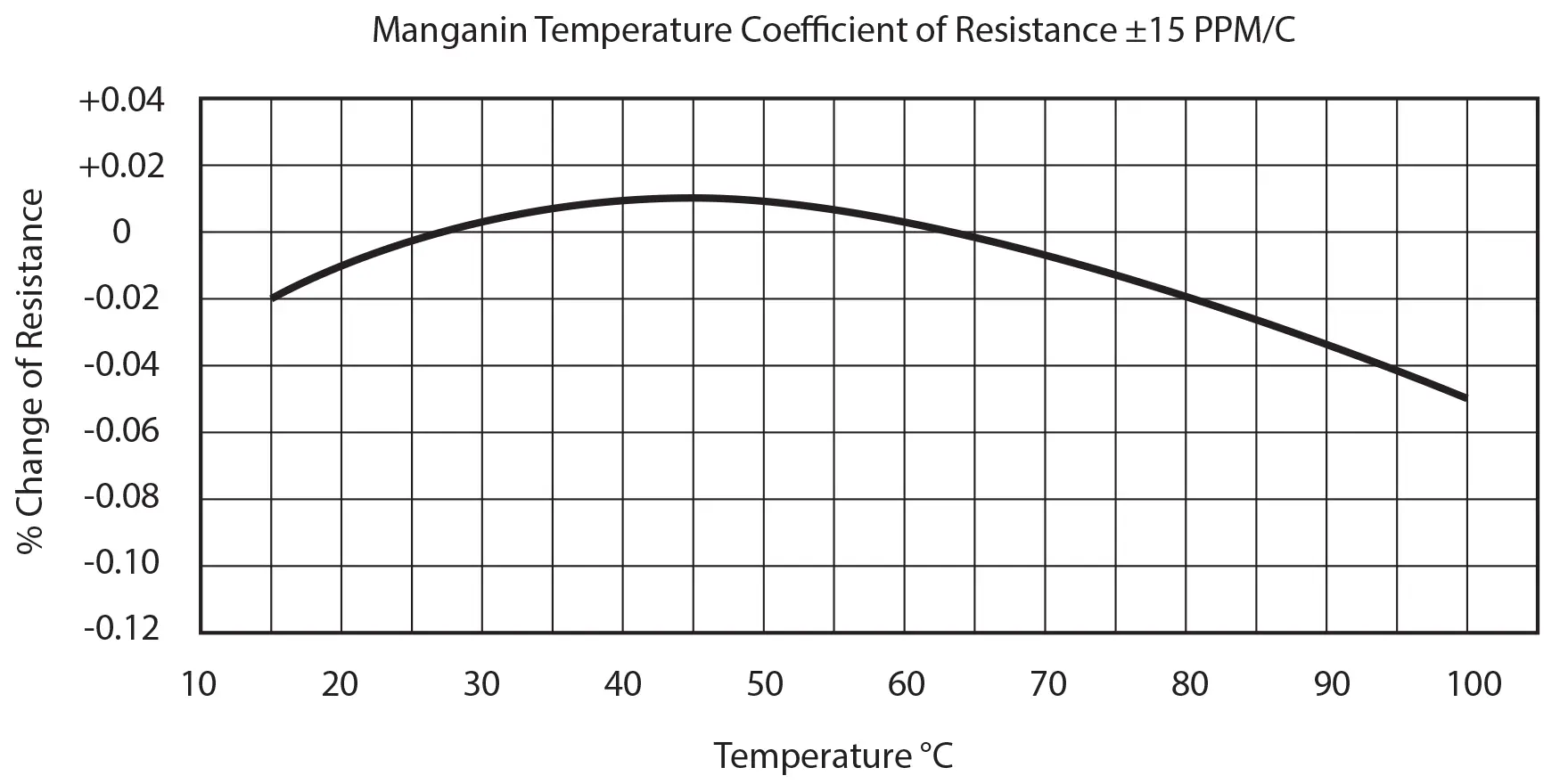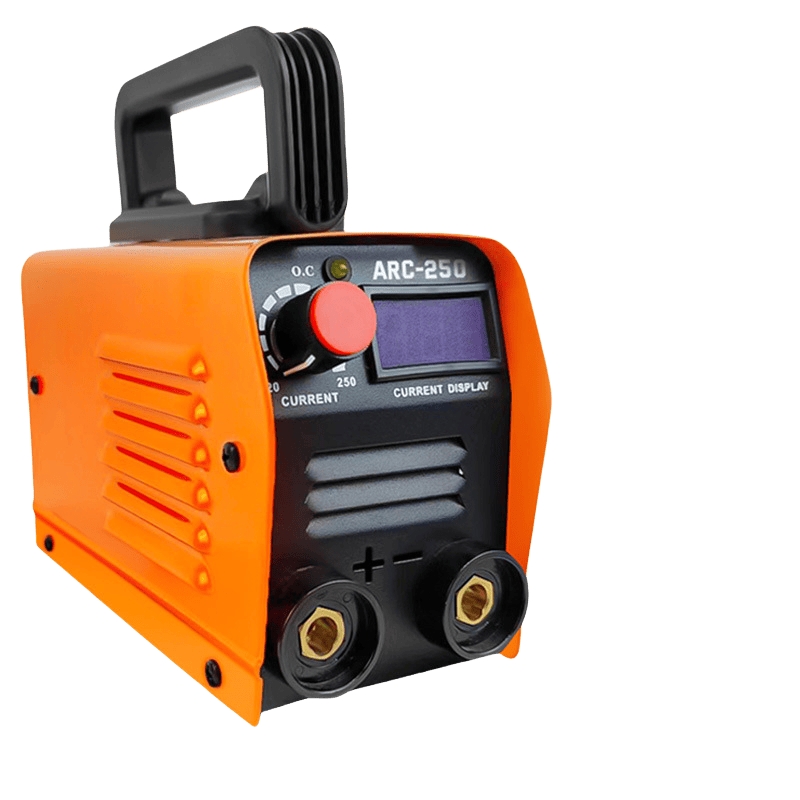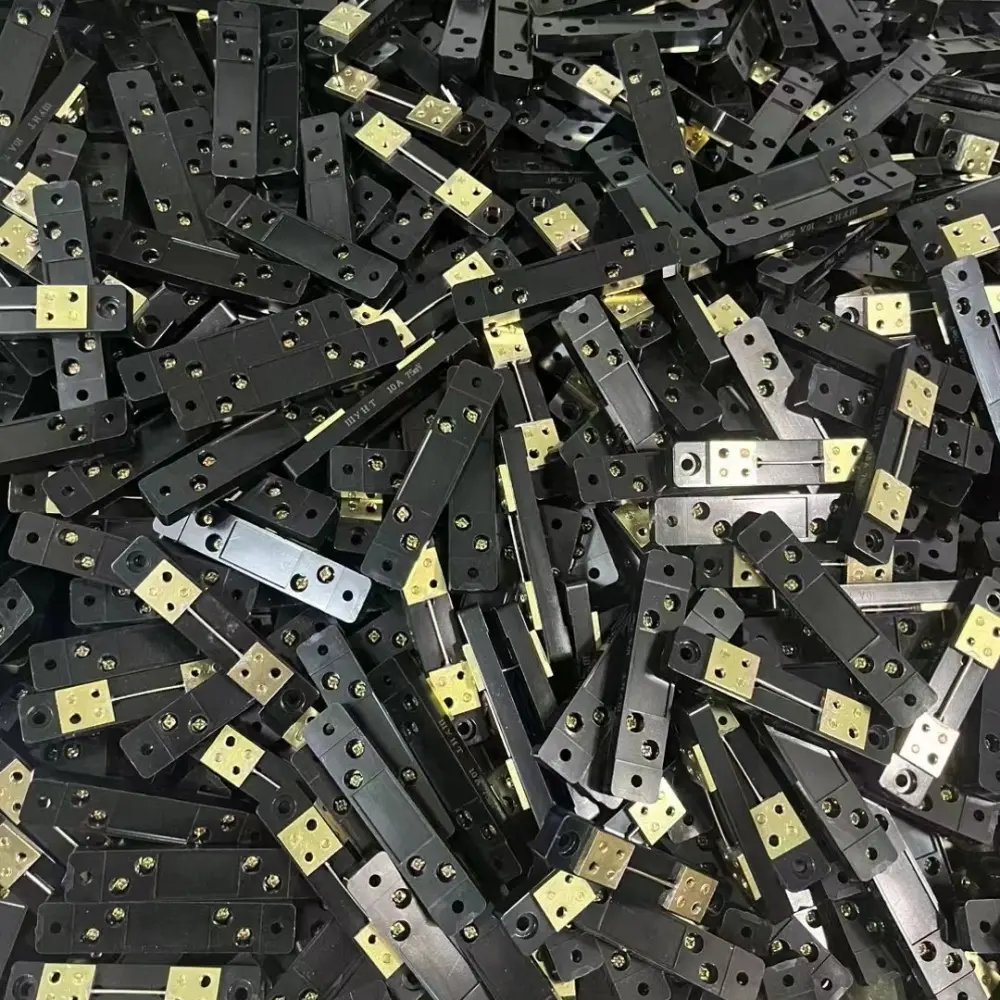The welding industry is experiencing rapid technological advancements, and staying ahead of these innovations is vital for manufacturers who seek to remain competitive. While welding machines have evolved significantly in areas such as power electronics, control systems, and user interfaces, one essential component remains crucial to system performance: the DC shunt. This article examines the latest technological developments in DC shunt design and implementation, focusing on innovations that welding machine manufacturers should monitor to ensure continued market leadership.
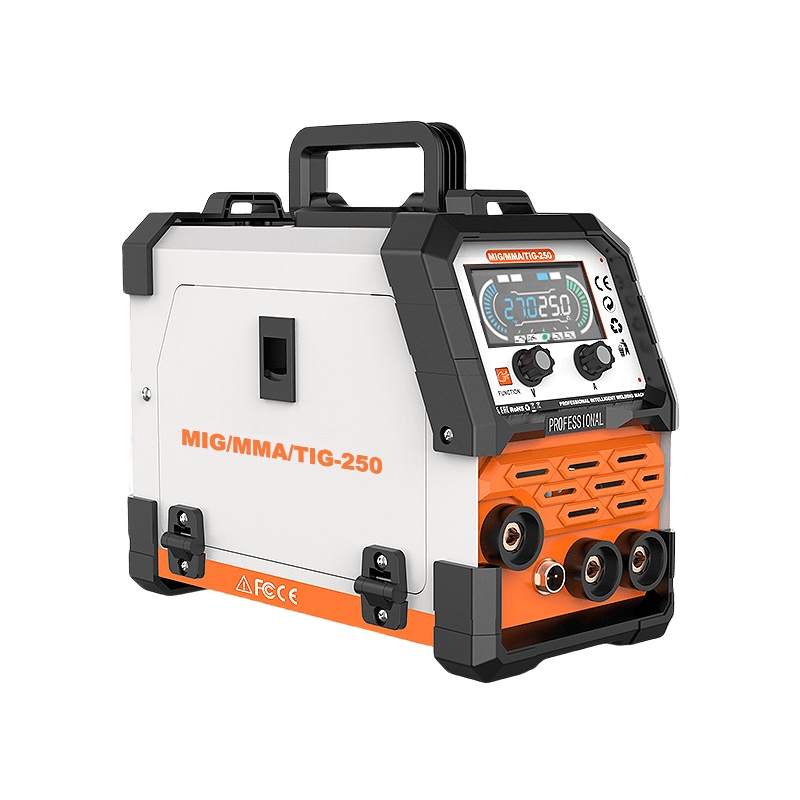
The Evolution of DC Shunt Technology
Historical Development Trajectory
To understand the current wave of innovations, it’s essential to grasp the evolution of DC shunt technology:
- Early Designs (1920s-1950s): Basic metal alloy shunts with limited accuracy and noticeable temperature drift.
- Standardization Era (1960s-1980s): Emergence of standard form factors and common voltage drops such as 50mV, 75mV, and 100mV.
- Precision Improvements (1980s-2000s): The introduction of manganin alloys and enhanced manufacturing methods.
- Digital Integration (2000s-2010s): Shunts developed specifically for integration with digital control systems.
- Current Innovation Wave (2010s-present): Focus on advanced materials, intelligent features, and system-level integration.
This evolution has transformed DC shunts from basic passive components to essential parts of modern welding systems, contributing to improved system performance and accuracy.
Key Technology Breakthroughs
Several key developments have dramatically enhanced DC shunt performance:
- Manganin Alloy Adoption: Offering a significantly lower temperature coefficient compared to earlier materials.
- Precision Manufacturing: Improved techniques for tighter tolerances and enhanced consistency.
- Four-Terminal (Kelvin) Designs: These eliminate connection resistance in measurement circuits.
- Surface Treatment Innovations: Enhanced environmental resistance and long-term stability.
- Integration with Digital Signal Processing: Enabling real-time compensation for greater accuracy.
These breakthroughs have transformed DC shunts into highly accurate, precision instruments critical to modern welding applications.
Performance Improvement Trajectory
The performance of DC shunts has drastically improved over time:
- Accuracy: From ±5% in early designs to ±0.1% or better in current models.
- Temperature Coefficient: Reduced from 200+ ppm/°C to less than 15 ppm/°C in high-performance models.
- Long-Term Stability: From frequent recalibration to stability lasting years.
- Environmental Resilience: Extended temperature ranges, now operational from -40°C to +85°C.
- Response Time: From slow thermal responses to microsecond-level current detection.
These advancements have allowed welding systems to achieve unprecedented levels of precision, consistency, and reliability.
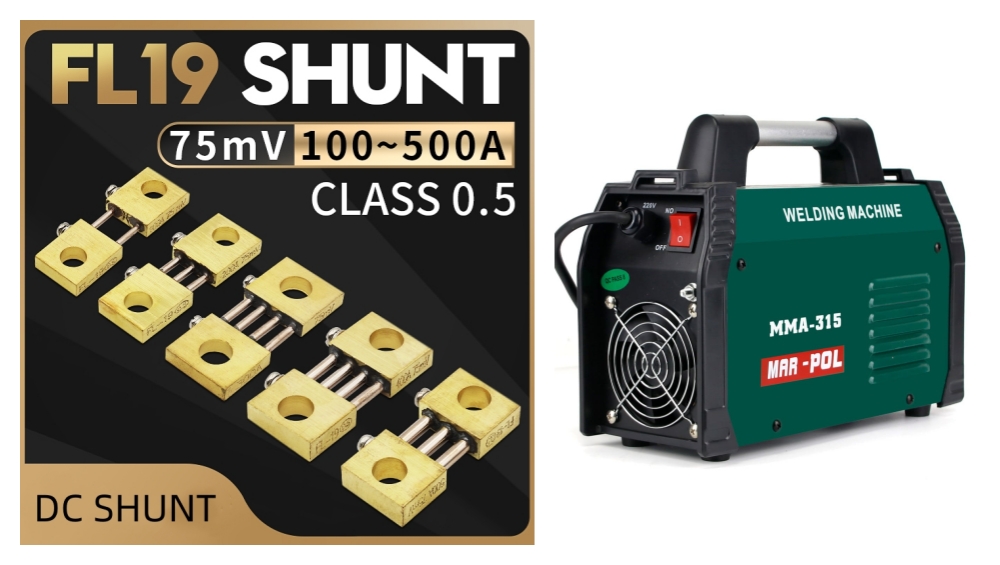
Current Innovation Trends
DC shunt technology is progressing along several critical paths that offer significant advantages for welding applications.
Material Science Advancements
Advancements in materials science are enhancing the fundamental performance of DC shunts:
- Advanced Alloys: New materials that lower temperature coefficients and offer improved stability.
- Nano-structured Materials: Tailored at the molecular level for optimal electrical and thermal properties.
- Surface Treatment Innovations: Coatings that resist corrosion and enhance connection stability.
- Thermal Management: Integrated heat dissipation elements for superior load performance.
- Connection Interface Improvements: Materials maintaining low resistance despite environmental challenges.
For example, the latest generation FL-19 series shunts uses proprietary alloys that maintain excellent long-term stability with temperature coefficients below 15ppm/°C.
Miniaturization and Integration Design
Design approaches today are focusing on more compact and integrated solutions:
- Reduced Footprint: Smaller designs without compromising current capacity.
- Integrated Mounting Options: Simplified installation and improved thermal contact.
- PCB-mount Variants: Shunts designed for direct circuit board mounting.
- Multi-Function Packages: Combining shunts with signal conditioning in single components.
- Modular Systems: Standardized interfaces for easier system design and maintenance.
These innovations are valuable for manufacturers seeking to reduce equipment size while maintaining or improving performance.
Digital and Smart Functionality
The integration of digital technologies is transforming DC shunts from passive components into active system elements:
- Built-in Temperature Sensing: Allows for real-time compensation.
- Digital Calibration: Automatically stores calibration data for easy adjustments.
- Self-diagnostics: Can identify and report connection or performance issues.
- Digital Output: Direct output without the need for external signal conversion.
- Programmable Characteristics: Adjustable parameters for specific applications.
The rise of “smart shunts” combines precise measurement with integrated signal processing, enabling direct digital output to control systems without external circuitry.
Environmental and Sustainable Design
Increasingly, DC shunts are being designed with sustainability in mind:
- RoHS Compliance: Eliminating hazardous materials.
- Reduced Material Usage: More efficient designs that use less raw material.
- Extended Service Life: Longer durability that reduces replacement frequency.
- Energy Efficiency: Lower resistance for minimal power loss.
- End-of-Life Considerations: Facilitating recycling through appropriate materials and construction.
These innovations help welding machine manufacturers meet growing environmental regulations and customer expectations for sustainability.
Digital Twins and Virtual Testing
Digital twins—virtual replicas of physical components—are changing how DC shunts are designed, tested, and used.
Digital Modeling Applications
Virtual modeling allows for sophisticated design optimization:
- Finite Element Analysis: Detailed simulations of electrical and thermal behavior.
- Multi-physics Modeling: Simultaneous simulation of electrical, thermal, and mechanical behaviors.
- Performance Prediction: Accurate forecasting of behavior under varying conditions.
- Sensitivity Analysis: Identifying key parameters and tolerances.
- Optimization Algorithms: Automated refinement of designs based on specific needs.
These techniques let designers explore a wide variety of configurations, ensuring that designs meet application requirements precisely.
Virtual Testing and Optimization
Digital simulations now extend beyond design into testing and validation:
- Virtual Environmental Testing: Simulating performance in extreme temperatures, vibration, etc.
- Accelerated Life Testing: Modeling long-term behavior before physical aging occurs.
- System Interaction Analysis: Evaluating component behavior within full systems.
- Parameter Sensitivity Studies: Understanding the impact of changes on overall performance.
- Failure Mode Analysis: Identifying potential failure modes and developing mitigation strategies.
For manufacturers, these capabilities enable thorough testing and faster development cycles, reducing time-to-market and enhancing reliability.
Product Lifecycle Management
Digital twins enhance the management of DC shunts throughout their lifecycle:
- Design History: Documenting all development decisions and alternatives.
- Manufacturing Guidance: Providing detailed specifications for production.
- Field Performance Prediction: Forecasting behavior in specific applications.
- Maintenance Optimization: Scheduling maintenance based on actual usage.
- Continuous Improvement: Refining products based on real-world data.
This lifecycle approach ensures that DC shunts meet expectations over the long term, from production to post-deployment.
New Materials and New Processes
The intersection of advanced materials science and manufacturing technologies has enabled the creation of DC shunts with previously unattainable performance characteristics.
Advanced Alloy Developments
New metallic formulations offer improved performance:
- Custom Manganin Variants: Optimized alloys for specific properties.
- Nano-doped Materials: Enhanced base metals with controlled additives.
- Gradient Alloys: Materials with varying composition throughout.
- Amorphous Metals: Non-crystalline alloys with unique properties.
- Surface-engineered Materials: Bulk materials with treated surfaces for optimized performance.
These materials enhance the stability, temperature performance, and durability of DC shunts, making them suitable for demanding applications.
Manufacturing Technology Impacts
Advanced production techniques create higher-performing components:
- Precision CNC Machining: Tighter tolerances and more complex geometries.
- Laser Welding: More precise and consistent connections.
- Additive Manufacturing: Enables complex internal structures.
- Vacuum Deposition: Creates ultra-thin, uniform coatings.
- Electron Beam Welding: Connections with minimal heat-affected zones.
These manufacturing advancements ensure that DC shunts exhibit exceptional consistency and stability, particularly in the FL-19 series.
Environmental Protection Innovations
New methods for environmental protection extend DC shunt reliability:
- Nano-coatings: Molecular-level coatings resist corrosion without compromising electrical performance.
- Hermetic Sealing: Complete protection from environmental contaminants.
- Composite Encapsulation: Tailored multi-layer protection.
- Self-healing Materials: Coatings that automatically repair minor damage.
- Active Protection Systems: Materials that actively prevent corrosion.
These protection methods ensure that precision DC shunts remain reliable in harsh welding environments.
Artificial Intelligence and Machine Learning Applications
Integrating AI and machine learning with high-precision DC shunts opens new possibilities for intelligent welding systems.
AI-Enhanced Control Systems
AI can leverage current measurement data for sophisticated control:
- Adaptive Parameter Optimization: Real-time adjustments based on material and joint conditions.
- Predictive Quality Models: Forecasting weld quality based on current patterns.
- Autonomous Troubleshooting: Self-diagnosing and addressing process issues.
- Pattern Recognition: Identifying specific signatures in current waveforms.
- Multi-variable Optimization: Balancing parameters for optimal results.
These AI-driven capabilities rely on high-quality current data provided by precision DC shunts, with shunt quality being crucial for AI performance.
Machine Learning for Predictive Maintenance
Machine learning extracts predictive insights from current measurement data:
- Anomaly Detection: Identifying unusual patterns signaling developing problems.
- Wear Prediction: Forecasting degradation based on electrical changes.
- Failure Prevention: Scheduling maintenance before failures.
- Root Cause Analysis: Identifying underlying issues from symptom patterns.
- Optimization Recommendations: Suggesting improvements based on operational data.
Machine learning systems can predict issues early, preventing costly downtime and quality problems by leveraging the data from precision DC shunts.
Future Development Directions
AI integration with precision measurement is just beginning, with several promising developments:
- Self-calibrating Systems: AI-driven automatic calibration that maintains accuracy.
- Cross-sensor Fusion: Combining data from multiple sensors for enhanced insights.
- Distributed Intelligence: Embedding processing capabilities throughout the system.
- Collaborative Learning: Sharing insights across multiple machines.
- Human-AI Collaboration: Interfaces combining operator expertise with AI insights.
These developments signal the future of intelligent welding systems, where AI will play a central role in performance optimization.
Conclusion: Embracing the Future of Precision
DC shunt technology has evolved from a simple component to a sophisticated tool that enables advancements in welding system performance, reliability, and intelligence. Manufacturers that recognize these developments and incorporate them into their product roadmaps will maintain a competitive edge in an increasingly complex market.
The manufacturers that succeed in the future will be those who see DC shunts not just as basic components but as foundations for system-level innovations that improve precision, reliability, and efficiency. By understanding the technological trends discussed in this article, manufacturers can stay ahead of the curve and meet the demands of tomorrow’s welding applications.

